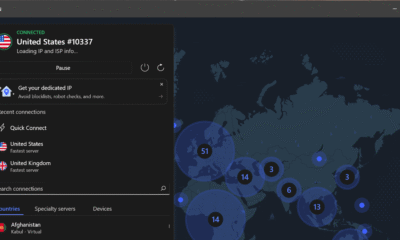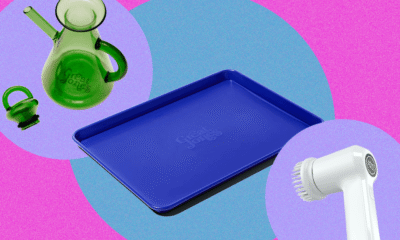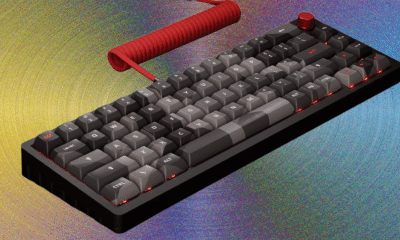Tech
Top Target Promo Codes for September 2025

Target has set itself apart from big box retailers like Walmart by having trendy clothes, homegoods branded by reality TV stars and, of course, in-store Starbucks. With malls and traditional department stores in decline, Target has even become the go-to destination for stay-at-home parents who need to get out of the house (and maybe get a Frappuccino). In recent years, the store has cemented themselves as a notch above similar retailers with exclusive products with a more high-end feel, while still being inexpensive and regularly holding sales for even more savings. Carrying everything from outdoor gear to clothes to tech and grocery items, WIRED has coupons for specific items as well as weekly deals—including this Target promo code to get $50 off.
Score a $50 Off Target Coupon When You Sign Up
One of the best kept secrets to saving sitewide at Target? Get $50 off orders of $50 or more when you’re approved for a Target Circle Credit or Debit Card. As a bonus, you can also get a $50 credit when you open a Target Circle Reloadable account and spend $50 at Target. The good news is that with this deal, no code is required. Simply sign up for a Target Circle Credit or Debit card, and when approved, you’ll get $50 savings on a purchase of $50 or more.
Get up to 50% Off + a $10 Gift Card With Target Circle Coupons
For even more savings, sign up for Target Circle—a membership program that rewards you for doing the shopping you already are. Target Circle members get 5% discounts in-store and online, free two-day shipping, no-rush returns, and a ton more perks.
Another benefit of being a Target Circle member are also the exclusive offers and limited-time deals, like a free year of Target Circle 360 when you spend $199 on qualifying purchases and a $30 reward when you spend $300 on qualifying purchases. These deals both end on September 20, but even when they expire, you can still find other great offers, like you’ll receive a $10 Target gift card when you buy 3 select household essentials, a $5 gift card with purchase of 4 personal care items, buy-one get-one deals for 25% off beauty and wellness products, and buy-one get-one for 50% off select food and drinks.
Students and Teachers Get an Extra 20% Off Target Coupon
Students can save over 50% on a membership and get 20% off storewide purchases. The student discount gets you a $49 membership, rather than the regular pricing of $99 per year ($50 in savings). Plus, Target has a promo for 20% off sitewide for students through September 27—perfect for back-to-school shopping. To be eligible for student discounts, you’ll need to upload a student ID, class schedule, or tuition receipt for proof.
Other customers can save too, including 50% off for those on Governmental Assistance. Members who qualify can get free, fast shipping, unlimited same-day delivery and more at just $5 per month—$6 off the regular price.
There are even more ways to save. Customers who are enrolled in Target 360 get tons of perks, like one free gift every month, early sale access, free same day delivery, and free 2-day delivery.
How Can I Get 15% Off at Target?
Celebrating life’s big milestones has never been easier (or cheaper) with Target Circle. As you get close to your baby or wedding registry event date, you’ll receive a 15% off storewide Target Circle offer that you can actually redeem twice. Just make sure your registries are active for at least two weeks before.
You’ll get your 15% off coupon for the baby registry eight weeks before your expected due date and you’ll get the wedding registry offer during the week of your event date. And just like that, you’ll be getting 15% off your next in-store or online purchase. Although the offer is limited to one per Target Circle member, you can redeem it up to two times within 12 months. But the offer expires in 6 months, so make sure you check the expiration date on the offer. There are a few ways to redeem: you can Wallet in the Target app, enter your phone number on the keypad or self-checkout screen, or scan your offers barcode on target.com/circle/offers.
More Ways to Save on Your Online Order and Unlock Target Free Shipping
One of the best ways to save at Target is to channel your mom’s couponing and keep an eye out for weekly Target ads with rotating and limited-time deals. These offers rotate weekly, and focus specifically on certain items, like electronics or groceries. In addition to the weekly ads, there are also top deals in various categories, and online clearance items for major coin off major products. You can also get exclusive discounts in the Target App, including digital coupons. And don’t forget to check out Target Circle deals or their Weekly Ad (in just a couple of taps).
Target offers free shipping on orders above $35—convenience for less money. Along with these Target promo codes, Target offers a price match guarantee to show their commitment to making sure you are getting the best deal. Plus, no Target coupon code is needed to save $50 when you’re approved for a Circle card.
Tech
OpenAI has slipped shopping into ChatGPT users’ chats—here’s why that matters
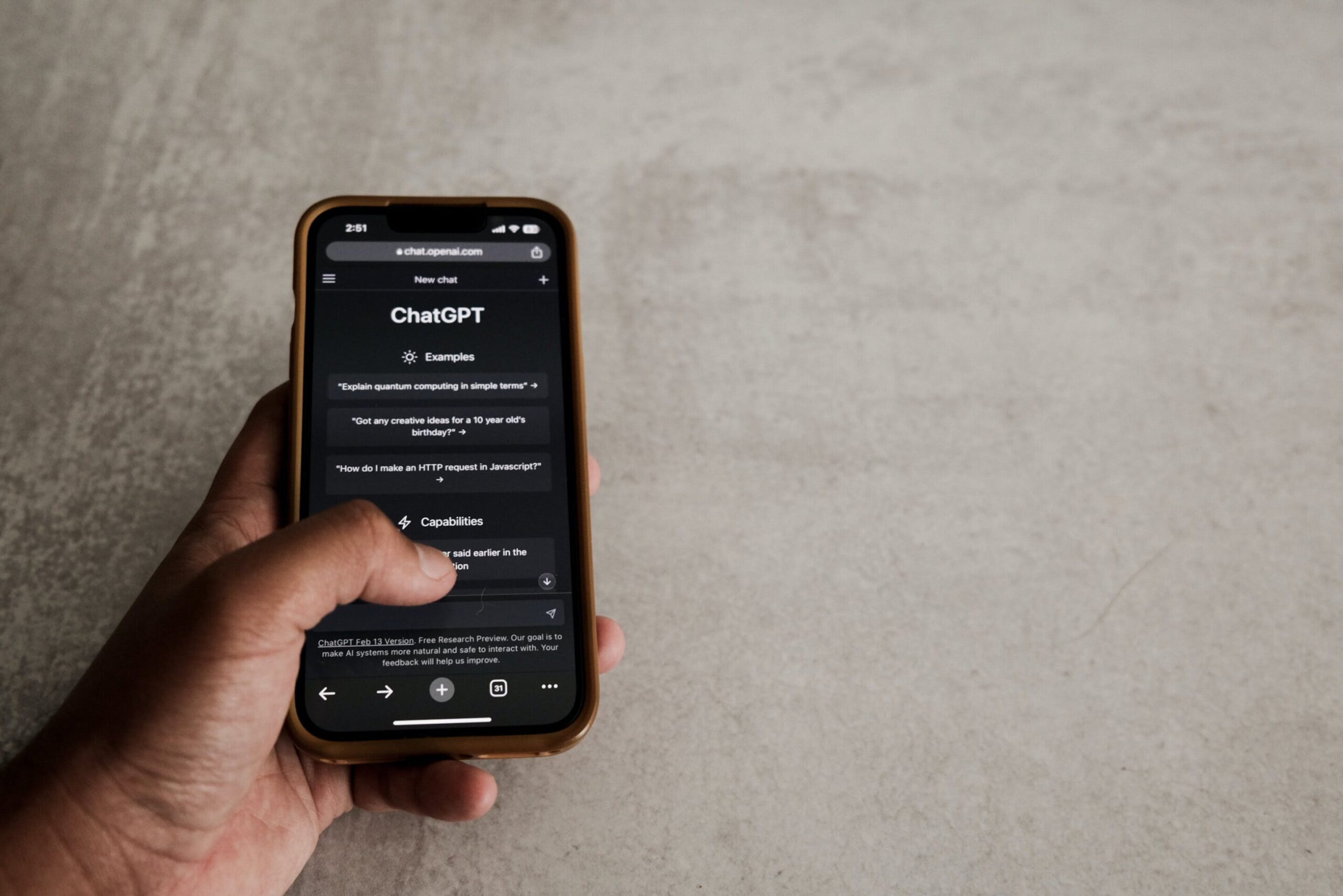
Your phone buzzes at 6 a.m. It’s ChatGPT: “I see you’re traveling to New York this week. Based on your preferences, I’ve found three restaurants near your hotel. Would you like me to make a reservation?”
You didn’t ask for this. The AI simply knew your plans from scanning your calendar and email and decided to help. Later, you mention to the chatbot needing flowers for your wife’s birthday. Within seconds, beautiful arrangements appear in the chat. You tap one: “Buy now.” Done. The flowers are ordered.
This isn’t science fiction. On Sept. 29, 2025, OpenAI and payment processor Stripe launched the Agentic Commerce Protocol. This technology lets you buy things instantly from Etsy within ChatGPT conversations. ChatGPT users are scheduled to gain access to over 1 million other Shopify merchants, from major household brand names to small shops as well.
As marketing researchers who study how AI affects consumer behavior, we believe we’re seeing the beginning of the biggest shift in how people shop since smartphones arrived. Most people have no idea it’s happening.
From searching to being served
For three decades, the internet has worked the same way: You want something, you Google it, you compare options, you decide, you buy. You’re in control.
That era is ending.
AI shopping assistants are evolving through three phases. First came “on-demand AI.” You ask ChatGPT a question, it answers. That’s where most people are today.
Now we’re entering “ambient AI,” where AI suggests things before you ask. ChatGPT monitors your calendar, reads your emails and offers recommendations without being asked.
Soon comes “autopilot AI,” where AI makes purchases for you with minimal input from you. “Order flowers for my anniversary next week.” ChatGPT checks your calendar, remembers preferences, processes payment and confirms delivery.
Each phase adds convenience but gives you less control.
The manipulation problem
AI’s responses create what researchers call an “advice illusion.” When ChatGPT suggests three hotels, you don’t see them as ads. They feel like recommendations from a knowledgeable friend. But you don’t know whether those hotels paid for placement or whether better options exist that ChatGPT didn’t show you.
Traditional advertising is something most people have learned to recognize and dismiss. But AI recommendations feel objective even when they’re not. With one-tap purchasing, the entire process happens so smoothly that you might not pause to compare options.
OpenAI isn’t alone in this race. In the same month, Google announced its competing protocol, AP2. Microsoft, Amazon and Meta are building similar systems. Whoever wins will be in position to control how billions of people buy things, potentially capturing a percentage of trillions of dollars in annual transactions.
What we’re giving up
This convenience comes with costs most people haven’t thought about.
Privacy: For AI to suggest restaurants, it needs to read your calendar and emails. For it to buy flowers, it needs your purchase history. People will be trading total surveillance for convenience.
Choice: Right now, you see multiple options when you search. With AI as the middleman, you might see only three options ChatGPT chooses. Entire businesses could become invisible if AI chooses to ignore them.
Power of comparing: When ChatGPT suggests products with one-tap checkout, the friction that made you pause and compare disappears.
It’s happening faster than you think
ChatGPT reached 800 million weekly users by September 2025, growing four times faster than social media platforms did. Major retailers began using OpenAI’s Agentic Commerce Protocol within days of its launch.
History shows people consistently underestimate how quickly they adapt to convenient technologies. Not long ago most people wouldn’t think of getting in a stranger’s car. Uber now has 150 million users.
Convenience always wins. The question isn’t whether AI shopping will become mainstream. It’s whether people will keep any real control over what they buy and why.
What you can do
The open internet gave people a world of information and choice at their fingertips. The AI revolution could take that away. Not by forcing people, but by making it so easy to let the algorithm decide that they forget what it’s like to truly choose for themselves. Buying things is becoming as thoughtless as sending a text.
In addition, a single company could become the gatekeeper for all digital shopping, with the potential for monopolization beyond even Amazon’s current dominance in e-commerce. We believe that it’s important to at least have a vigorous public conversation about whether this is the future people actually want.
Here are some steps you can take to resist the lure of convenience:
Question AI suggestions. When ChatGPT suggests products, recognize you’re seeing hand-picked choices, not all your options. Before one-tap purchases, pause and ask: Would I buy this if I had to visit five websites and compare prices?
Review your privacy settings carefully. Understand what you’re trading for convenience.
Talk about this with friends and family. The shift to AI shopping is happening without public awareness. The time to have conversations about acceptable limits is now, before one-tap purchasing becomes so normal that questioning it seems strange.
The invisible price tag
AI will learn what you want, maybe even before you want it. Every time you tap “Buy now,” you’re training it—teaching it your patterns, your weaknesses, what time of day you impulse buy.
Our warning isn’t about rejecting technology. It’s about recognizing the trade-offs. Every convenience has a cost. Every tap is data. The companies building these systems are betting you won’t notice, and in most cases they’re probably right.
This article is republished from The Conversation under a Creative Commons license. Read the original article.![]()
Citation:
OpenAI has slipped shopping into ChatGPT users’ chats—here’s why that matters (2025, October 20)
retrieved 20 October 2025
from https://techxplore.com/news/2025-10-openai-chatgpt-users-chats.html
This document is subject to copyright. Apart from any fair dealing for the purpose of private study or research, no
part may be reproduced without the written permission. The content is provided for information purposes only.
Tech
Spark plasma sintering and diffusion technology yield high-performance permanent magnets for green industries

A research team has developed an innovative manufacturing process for permanent magnets that overcomes the limitations of conventional techniques. The team’s breakthrough significantly advances the diffusion technology, which is essential for improving magnetic performance, and creates new possibilities for applying high-efficiency magnets in eco-friendly industries such as electric vehicles, wind turbines, and robotics.
The findings are published in the Journal of Alloys and Compounds.
The joint research team from the Nano Technology Research Division at DGIST was led by Dr. Donghwan Kim and Dr. Jungmin Kim.
With the rapid growth of the electric vehicle and wind power sectors, the demand for powerful permanent magnets capable of stable operation at high temperatures has soared. A major example is the neodymium (Nd-Fe-B) permanent magnet, widely used in electric vehicle motors. However, these magnets experience a decline in magnetic performance under extreme heat, requiring the addition of heavy rare-earth elements such as terbium (Tb) and dysprosium (Dy) to maintain their strength. The challenge is that these elements are both rare and expensive.
To address this issue, the grain boundary diffusion process has been widely adopted. This technique enhances magnetic performance by infiltrating a small amount of heavy rare-earth material into the magnet’s surface. However, diffusion in this process is limited to the surface layer and does not penetrate into the magnet’s interior, making it difficult to apply to thick magnets.
To overcome this limitation, the research team combined spark plasma sintering, an advanced manufacturing technique, with the grain boundary diffusion process. By pre-mixing the diffusion material during the powder-based magnet fabrication stage, uniform diffusion was achieved throughout the magnet. Consequently, the diffusion depth increased markedly compared with that achieved by existing methods, allowing for the creation of a core–shell structure in which the magnet exhibits uniform and enhanced magnetic performance.
Remarkably, even with the same amount of rare-earth material, the new process achieved higher diffusion efficiency and significantly improved overall performance. This advancement makes it possible to produce magnets that are smaller and lighter while maintaining strong magnetic strength. It is expected to contribute to the miniaturization, weight reduction, and improved energy efficiency of electric vehicle motors. Additionally, the process shows great potential for application to large-scale magnets.
Principal Researcher Dr. Donghwan Kim stated, “This study presents a method that overcomes the limitations of the conventional grain boundary diffusion technology, enabling uniform performance throughout the magnet. It will make a significant contribution to the development of high-performance permanent magnets required in eco-friendly energy industries such as electric vehicles and wind power generation.”
More information:
Seong Chan Kim et al, Homogeneous core-shell structure formation in Nd-Fe-B sintered magnets through advanced spark plasma sintering and internal grain boundary diffusion, Journal of Alloys and Compounds (2025). DOI: 10.1016/j.jallcom.2025.183635
Citation:
Spark plasma sintering and diffusion technology yield high-performance permanent magnets for green industries (2025, October 20)
retrieved 20 October 2025
from https://techxplore.com/news/2025-10-plasma-sintering-diffusion-technology-yield.html
This document is subject to copyright. Apart from any fair dealing for the purpose of private study or research, no
part may be reproduced without the written permission. The content is provided for information purposes only.
Tech
Mystery Object From ‘Space’ Strikes United Airlines Flight Over Utah

The National Transportation Safety Board confirmed Sunday that it is investigating an airliner that was struck by an object in its windscreen, mid-flight, over Utah.
“NTSB gathering radar, weather, flight recorder data,” the federal agency said on the social media site X. “Windscreen being sent to NTSB laboratories for examination.”
The strike occurred Thursday, during a United Airlines flight from Denver to Los Angeles. Images shared on social media showed that one of the two large windows at the front of a 737 MAX aircraft was significantly cracked. Related images also reveal a pilot’s arm that has been cut multiple times by what appear to be small shards of glass.
Object’s Origin Not Confirmed
The captain of the flight reportedly described the object that hit the plane as “space debris.” This has not been confirmed, however.
After the impact, the aircraft safely landed at Salt Lake City International Airport after being diverted.
Images of the strike showed that an object made a forceful impact near the upper-right part of the window, showing damage to the metal frame. Because aircraft windows are multiple layers thick, with laminate in between, the window pane did not shatter completely. The aircraft was flying above 30,000 feet—likely around 36,000 feet—and the cockpit apparently maintained its cabin pressure.
So was it space debris? It is impossible to know without more data. A very few species of birds can fly above 30,000 feet. However, the world’s highest flying bird, Rüppell’s vulture, is found mainly in Africa. An unregulated weather balloon is also a possibility, although it’s not clear whether the velocity would have been high enough to cause the kind of damage observed. Hail is also a potential culprit.
Assuming this was not a Shohei Ohtani home run ball, the only other potential cause of the damage is an object from space.
That was the initial conclusion of the pilot, but a meteor is more likely than space debris. Estimates vary, but a recent study in the journal Geology found that about 17,000 meteorites strike Earth in a given year. That is at least an order of magnitude greater than the amount of human-made space debris that survives reentry through Earth’s atmosphere.
A careful analysis of the glass and metal impacted by the object should be able to reveal its origin.
This story originally appeared on Ars Technica.
-

 Tech1 week ago
Tech1 week agoAustralian airline Qantas says millions of customers’ data leaked online
-

 Tech1 week ago
Tech1 week agoUK police to upgrade illicit asset recovery system | Computer Weekly
-
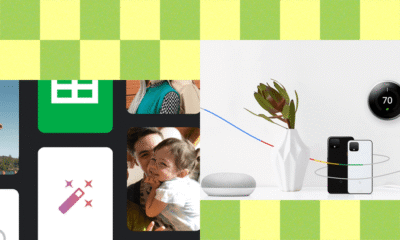
 Tech6 days ago
Tech6 days agoWhat Is Google One, and Should You Subscribe?
-
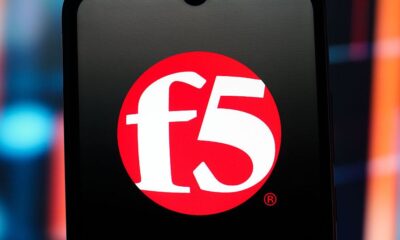
 Tech4 days ago
Tech4 days agoWhy the F5 Hack Created an ‘Imminent Threat’ for Thousands of Networks
-

 Entertainment1 week ago
Entertainment1 week agoKaty Perry and Justin Trudeau are dating: Report
-

 Entertainment1 week ago
Entertainment1 week agoVictoria Beckham thinks Brooklyn Beckham is fed up with Nicola Peltz drama?
-

 Business1 week ago
Business1 week agoEnvironment minister Bhupender Yadav heads to Brazil: India engages in pre-talks ahead of COP30; climate finance and adaptation on agenda – The Times of India
-

 Politics1 week ago
Politics1 week agoNo survivors likely after Tennessee military blast, say officials


